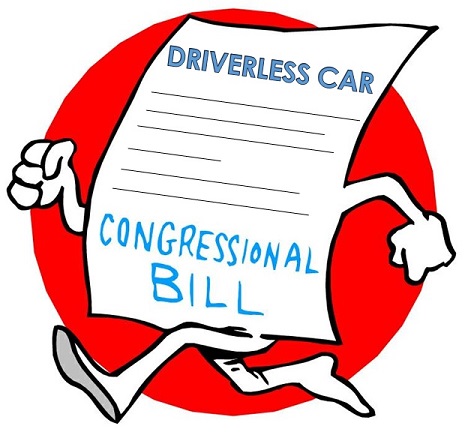Driverless Car Bill Needs Adjustments
December 19, 2018
There are many different industry and interest groups that have a stake in the outcome of the driverless car bill. The bill passed the Senate Commerce, Science and Transportation Committee by a voice vote in October, and a companion bill sailed through the House last year. But progress stalled until early this month, when the Senate committee produced a draft that attempted to pave the way for a floor vote.
The bill faces a number of concerns.
Today, all motor vehicle operators are required to pass a license examination demonstrating a minimum level of competence before sharing the road with anyone else. Yet, this driverless car bill has no licensing requirements for robots and thus no objective validation tests for vehicle safety before allowing the sale of potentially hundreds of thousands of driverless vehicles.
In addition to not being licensed as safe, if passed as proposed, the bill would exempt these computer-driven machines from the liability that humans face when getting behind the wheel. When driverless cars crash — either into one of the 270 million human driven cars already on the road, or pedestrians or bicyclists — the humans involved may be out of luck when it comes to legal protection. While the bill’s authors claim to have addressed a liability loophole involving binding arbitration and other underhanded tactics, there remains hidden surprises for crash victims.
Most important to note is the bill’s suspension of arbitration that will end when federal rules are put in place. If manufacturers of defective parts have been subject to federal laws and victims of said parts have had the opportunity to seek their day in court, manufacturers of driverless cars should be held to the same standards.
Ideally, once steering wheels and brake pedals are removed, it could potentially give those who use wheelchairs and others in the disability community greater access to the wonders of modern transportation. Except there are reasons vehicles are designed with passengers facing forward and in secured positions: safety.
Current occupant protection standards allow airbags to deploy and crumple zones to form, saving thousands of lives annually. Case in point from earlier this year is the stretch limousine crash which killed all 18 vehicle occupants.
Finally, the lack of a mandate for collecting and accessing crash data is unfortunate. Airplanes, boats and conventional cars driven by people have uniform requirements for data recording when they crash so that objective third parties (not the manufacturer) can investigate and determine what happened.
This will be needed more than ever in the context of autonomous vehicle technology to determine if the crash was caused by the computer, the human operator, the road or even another car operated by a drunk driver. Objective information about crashes could help the industry improve and ensure the public has confidence in the technology. But this will be nearly impossible to achieve without uniform data elements like the ones that exist in modern aviation technology. The AV START Act delegates how much crash data, what data and how that data is made accessible.
There is still time for Congress to adjust the bill and do the right thing for the safety and well being of everyone – the driverless car passengers, manufacturers and the general public.
